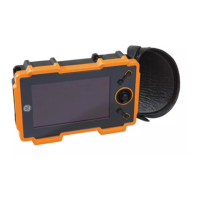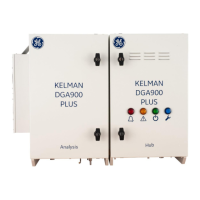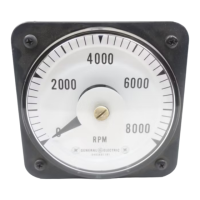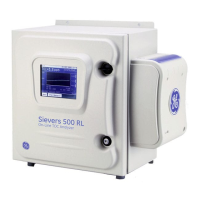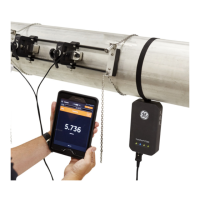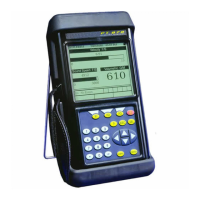Krautkramer USM 35X Issue 01, 04/2005 3-7
Initial start-up
3.2 Connecting a probe
To prepare the USM 35X for operation, you have to
connect a probe to it. Any Krautkramer probe can be
used for the USM 35X, provided the appropriate cable
is available and the operating frequency is within an
adequate range.
The USM 35X is available with the probe connectors
LEMO-1-TRIAX or BNC.
The probe is connected to the sockets at the top right
on the instrument casing. Both connector sockets are
equally suitable (connected in parallel) for connecting
probes equipped with only one ultrasonic element (ultra-
sonic transducer) so that it does not matter which one
of the two sockets is used.
When connecting a dual-element (TR) probe (having
one transmitter element and one receiver element), or
two probes (of which one is transmitting and the other
one receiving), attention should be paid to connecting
the transmitter element to the right-hand socket (trans-
mitter, marked with black circle at the rear of the instru-
ment case) and the receiver element to the left-hand
socket (receiver, marked with red circle).
A Attention:
If this is not taken into account, the consequence
would be a mismatching which may lead to consider-
able power losses or even to echo waveform distor-
tions.
Receiver Transmitter
Connecting a probe
Krautkramer USM 35X Issue 01, 04/2005 3-7
Initial start-up
3.2 Connecting a probe
To prepare the USM 35X for operation, you have to
connect a probe to it. Any Krautkramer probe can be
used for the USM 35X, provided the appropriate cable
is available and the operating frequency is within an
adequate range.
The USM 35X is available with the probe connectors
LEMO-1-TRIAX or BNC.
The probe is connected to the sockets at the top right
on the instrument casing. Both connector sockets are
equally suitable (connected in parallel) for connecting
probes equipped with only one ultrasonic element (ultra-
sonic transducer) so that it does not matter which one
of the two sockets is used.
When connecting a dual-element (TR) probe (having
one transmitter element and one receiver element), or
two probes (of which one is transmitting and the other
one receiving), attention should be paid to connecting
the transmitter element to the right-hand socket (trans-
mitter, marked with black circle at the rear of the instru-
ment case) and the receiver element to the left-hand
socket (receiver, marked with red circle).
A Attention:
If this is not taken into account, the consequence
would be a mismatching which may lead to consider-
able power losses or even to echo waveform distor-
tions.
Receiver Transmitter
Connecting a probe
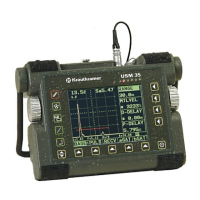
